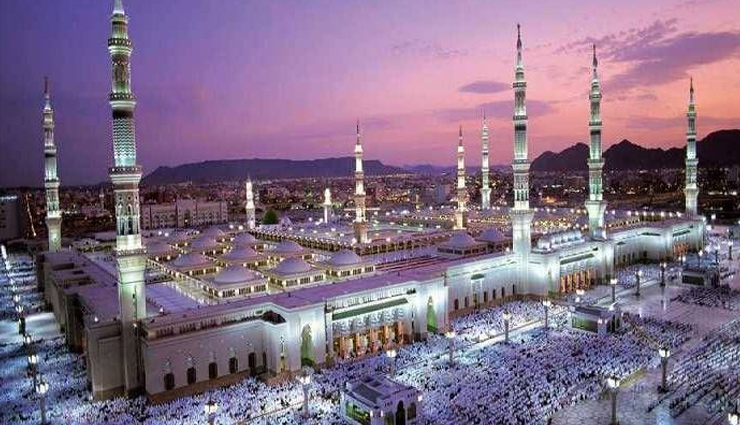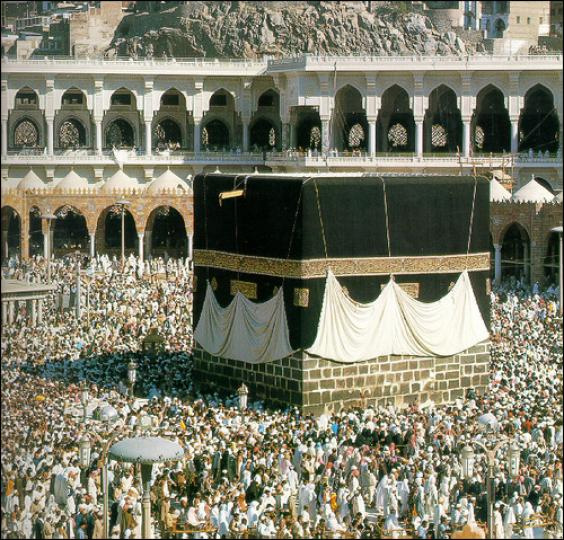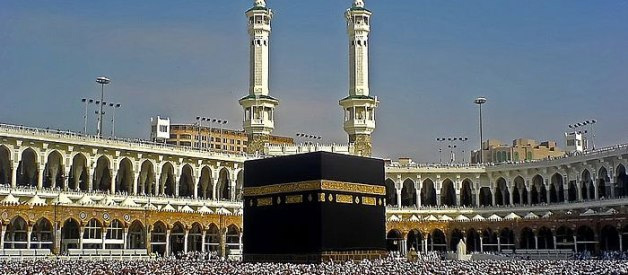Bakrid 2018- History Of Mecca Madina
By: Priyanka Maheshwari Tue, 21 Aug 2018 1:46:52

Mecca is a city in the Hejazi region of the Arabian Peninsula, and the plain of Tihamah in Saudi Arabia, and is also the capital and administrative headquarters of the Makkah Region. The city is located 70 km (43 mi) inland from Jeddah in a narrow valley at a height of 277 m (909 ft) above sea level, and 340 kilometres (210 mi) south of Medina. Its resident population in 2012 was roughly 2 million, although visitors more than triple this number every year during the Ḥajj period held in the twelfth Muslim lunar month of Dhūl-Ḥijjah.
As the birthplace of Muhammad, and the site of Muhammad's first revelation of the Quran (specifically, a cave 3 km (2 mi) from Mecca), Mecca is regarded as the holiest city in the religion of Islam and a pilgrimage to it known as the Hajj is obligatory for all able Muslims. Mecca is home to the Kaaba, by majority description Islam's holiest site, as well as being the direction of Muslim prayer. Mecca was long ruled by Muhammad's descendants, the sharifs, acting either as independent rulers or as vassals to larger polities. It was conquered by Ibn Saud in 1925. In its modern period, Mecca has seen tremendous expansion in size and infrastructure, home to structures such as the Abraj Al Bait, also known as the Makkah Royal Clock Tower Hotel, the world's fourth tallest building and the building with the third largest amount of floor area. During this expansion, Mecca has lost some historical structures and archaeological sites, such as the Ajyad Fortress. Today, more than 15 million Muslims visit Mecca annually, including several million during the few days of the Hajj. As a result, Mecca has become one of the most cosmopolitan cities in the Muslim world, even though non-Muslims are prohibited from entering the city.
The early history of Mecca is still largely disputed, as there are no unambiguous references to it in ancient literature prior to the rise of Islam. The Roman Empire took control of part of the Hejaz in 106 CE, ruling cities such as Hegra (now known as Mada'in Saleh), located to the north of Mecca. Even though detailed descriptions were established of Western Arabia by Rome, such as by Procopius, there are no references of a pilgrimage and trading outpost such as Mecca. The first direct mention of Mecca in external literature occurs in 741 CE, in the Byzantine-Arab Chronicle, though here the author places it in Mesopotamia rather than the Hejaz.
Given the inhospitable environment and lack of historical references in Roman, Persian and Indian sources, historians including Patricia Crone and Tom Holland have cast doubt on the claim that Mecca was a major historical trading outpost.

In the Islamic view, the beginnings of Mecca are attributed to Ishmael's descendants. The Old Testament chapter Psalm 84:3–6, and a mention of a pilgrimage at the Valley of Baca, that Muslims see as referring to the mentioning of Mecca as Bakkah in Quran's Surah 3:96. Some time in the 5th century, the Kaaba was a place of worship for the deities of Arabia's pagan tribes. Mecca's most important pagan deity was Hubal, which had been placed there by the ruling Quraysh tribe and remained until the 7th century.
In the Sharḥ al- Asāṭīr, a commentary on the Samaritan midrashic chronology of the Patriarchs, of unknown date but probably composed in the tenth century C.E., it is claimed that Mecca was built by the sons of Nebaioth, the eldest son of Ishmael.

In the 5th century, the Quraysh took control of Mecca, and became skilled merchants and traders. In the 6th century they joined the lucrative spice trade, since battles elsewhere were diverting trade routes from dangerous sea routes to more secure overland routes. The Byzantine Empire had previously controlled the Red Sea, but piracy had been increasing. Another previous route that ran through the Persian Gulf via the Tigris and Euphrates rivers was also being threatened by exploitations from the Sassanid Empire, and was being disrupted by the Lakhmids, the Ghassanids, and the Roman–Persian Wars. Mecca's prominence as a trading center also surpassed the cities of Petra and Palmyra. The Sassanids however did not always pose a threat to Mecca, as in 575 CE they protected Mecca city from invasion by the Kingdom of Axum, led by its Christian leader Abraha. The tribes of southern Arabia asked the Persian king Khosrau I for aid, in response to which he came south to Arabia with foot-soldiers and a fleet of ships into Mecca. The Persian intervention prevented Christianity from spreading eastward into Arabia, and Mecca and the Islamic prophet Muhammad, who was at the time six years old in the Quraysh tribe, "would not grow up under the cross.





